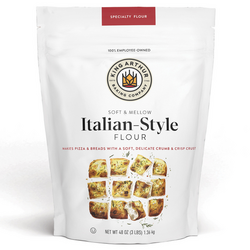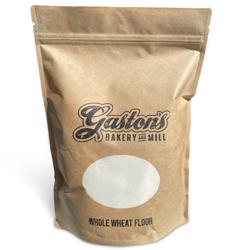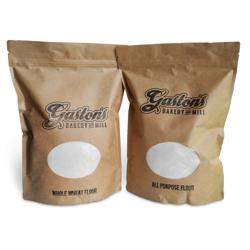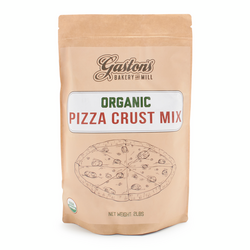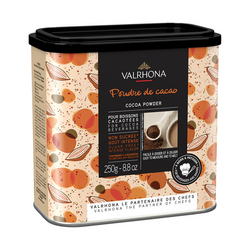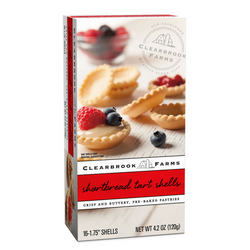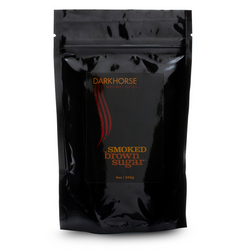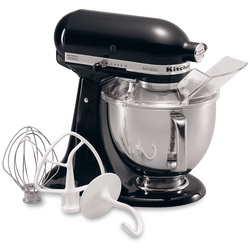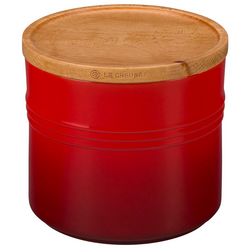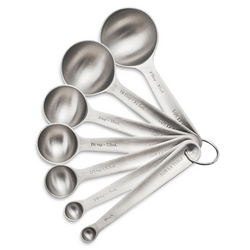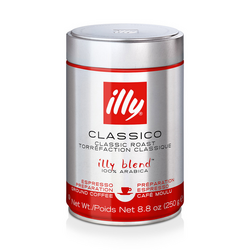-
(5)
Gaston Bakery All-Purpose Flour...Baking with flour is absolutely the best....Simply the best flour!...Hands down, this is The best flour and only flour I use. Don't waste premium ingredients on store bought old flour.
Pros: quality, nutrition, taste
Add to Bag -
Lower in protein than all-purpose flour and mellower, this Italian-style flour from King Arthur yields supple, smooth, and easy to shape dough. The resulting baked goods are light, airy, and have a crisp crust. It's ideal for pizza, focaccia, flatbreads,...
Add to Bag -
Great for home baking enthusiasts, this assortment includes six bags of Gaston’s signature whole wheat flour. Each flour is carefully formulated to produce amazing results and contains only additive-free wheat. Gaston’s flours are milled...
Add to Bag -
(1)
Probably one of the best flours I've ever tried....I bake a lot and I do not care to spend more money to find very high quality flour, but this one takes it to the next level.
Pros: texture, quality
Add to Bag -
(1)
Gaston’s organic pizza mix makes the best from-scratch pizza crusts thanks to its in-house milling process using only local, sustainable wheat. Each flour is carefully formulated to produce amazing results and contains only additive-free wheat....
Add to Bag
Baking Flour
Baking flour is an essential ingredient in many baked goods. These flours come in a variety of types, each with its own unique characteristics and uses. They are typically made from wheat, but other grains such as rye or barley can also be used. Here are some great options.
Baking Flour
As we navigate the chill of February, baking takes on an even more comforting role. It's the perfect time to explore the hearty, enriching qualities of various bakery flours. Imagine the warmth of a freshly baked bread loaf making a Sunday morning feel all the more inviting, or the smell of cinnamon rolls filling the kitchen on a snowy day. These moments are made all the better with the right baking flour. For those looking to gift something truly special, consider the joy that a selection of premium baking flours can bring to a baking enthusiast. It’s not just giving them the ingredients; it’s an invitation to create and enjoy the process of baking, to experiment with rustic ryes or delicate pastry flours. Moreover, for those who are health-conscious or have dietary preferences, the expanding range of gluten-free and alternative baking flours offers a way to indulge without compromise.
Choosing the right type of flour is critical, as each variety serves a unique purpose. The protein content in flour, which can vary from the softness of cake flour to the robustness of bread flour, dictates its best use in baking. For intricate pastries and light, airy cakes, a low-protein cake or pastry flour is typically best. On the other hand, breads benefit from higher protein flours that can handle yeast and rise beautifully. For those who revel in making hearty, rustic breads or tender pastries, understanding these distinctions will elevate your baking. And let’s not forget the role of complementary ingredients that can enhance your creations. A drizzle of Baking Syrup can add that perfect touch of sweetness and shine to your pastries, making them not only taste divine but also look irresistibly inviting. Whether you’re dusting surfaces with a sprinkle of table flour for kneading dough or folding delicate layers with a specialty baking flour, each choice plays a pivotal role in the outcome of your culinary endeavors.
In essence, the world of baking flours invites a delightful exploration into the heart of baking, where every grain tells a story and every bake starts a new tradition. This February, embrace the warmth of your oven and let the magic of baking flour elevate your home cooking to new, delicious heights.
FAQ List
All-purpose flour has a lower protein content than bread flour, which makes it a versatile option for a wide variety of recipes. Bread flour has a higher protein content, which gives it a stronger gluten structure and is ideal for making yeast breads and other baked goods that require a chewy texture.
It depends on the recipe and the flours you are substituting. Some flours can be used interchangeably, while others have unique characteristics that can affect the texture and flavor of the final product. It's best to consult a baking guide or recipe book for specific substitution recommendations.
Flour should be stored in an airtight container in a cool, dry place, away from direct sunlight. This will help prevent moisture and humidity from affecting the quality of the flour. It's also a good idea to label the container with the type of flour and the date it was purchased.
Gluten-free flour is made from grains or other ingredients that do not contain gluten, a protein found in wheat, barley, and rye. This type of flour is ideal for those with gluten sensitivities or celiac disease, but it may require different baking techniques than traditional wheat flour.
There are many alternative flours available, including spelt flour, teff flour, almond flour, coconut flour, and more. These flours can add unique flavors and textures to your baked goods, but may require different baking techniques than traditional wheat flour. It's best to consult a baking guide or recipe book for specific recommendations.

)
